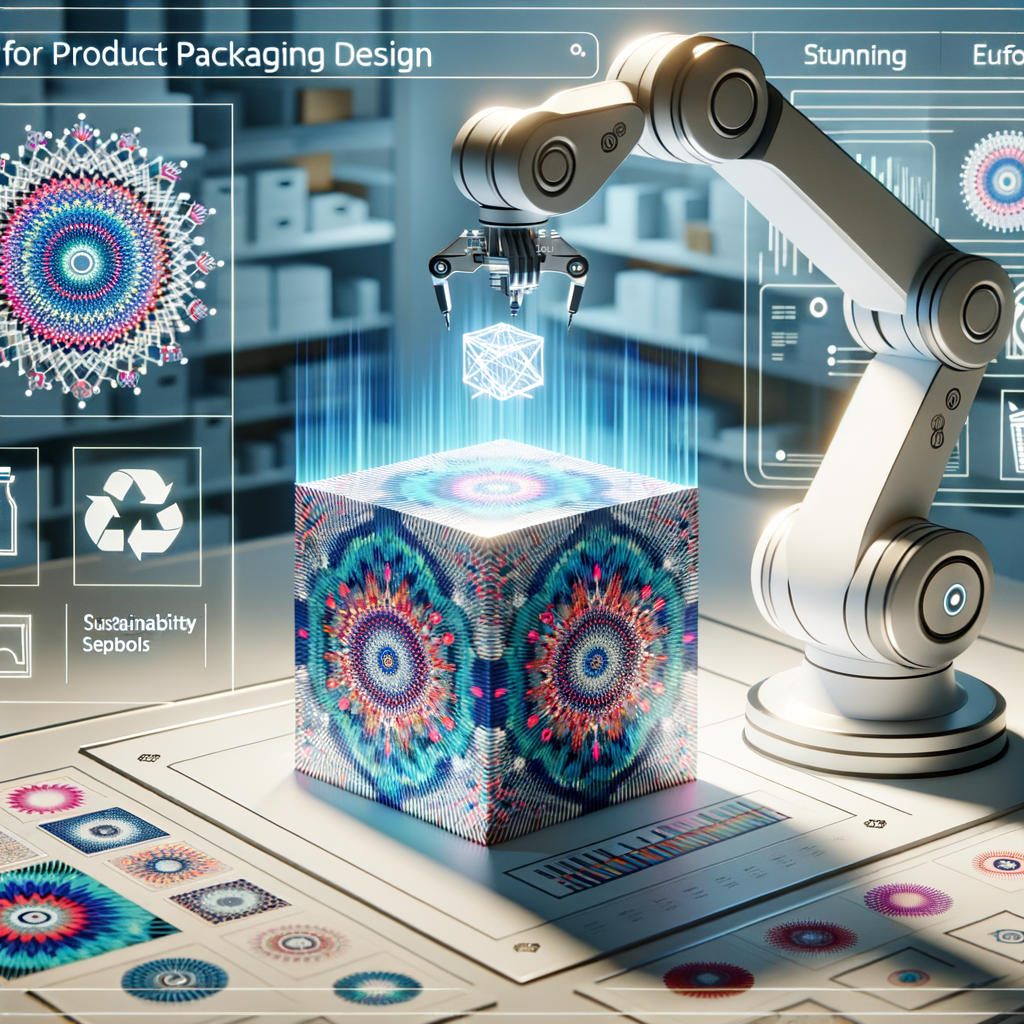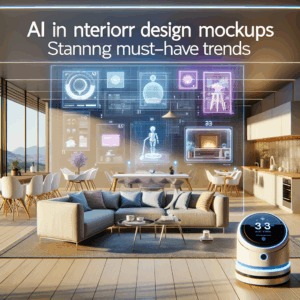
AI For Product Packaging Design: Stunning And Effortless Solutions
- Understanding AI in Product Packaging Design
- Why AI Matters in Packaging Design
- The Creative Process: How AI Enhances Design
- Key AI Tools for Packaging Design
- Streamlining Workflows: AI's Role in Efficiency
- Designing for Sustainability with AI
- A Case Study: Brands Leveraging AI in Packaging Design
- Challenges and Limitations of AI in Design
- Future Trends: The Evolution of AI in Packaging
- Conclusion: Embracing AI for Effortless Solutions
- Frequently Asked Questions
- References
Understanding AI in Product Packaging Design
Artificial Intelligence (AI) has transformed many industries, and product packaging design is no exception. With AI’s capabilities, businesses can create stunning designs that captivate consumers. Imagine using algorithms to enhance creativity, reduce costs, and speed up the design process. This technology opens a treasure trove of possibilities, making product packaging not just functional but also a key marketing tool.
AI can analyze customer behavior, preferences, and trends, enabling designers to create packaging that resonates with target audiences. Moreover, it improves efficiency by automating repetitive tasks like layout and graphics adjustments. As a result, designers can focus more on innovative aspects of their work. By integrating AI, companies can ensure their packaging is not only eye-catching but also strategically aligned with brand values.
Why AI Matters in Packaging Design
The packaging landscape is evolving rapidly. Traditional design approaches often fall short in meeting fast-paced market demands. AI steps in as a reliable partner for designers. It allows for adaptive designs that can be easily modified based on market feedback. Furthermore, businesses can utilize AI to conduct market research more efficiently. Algorithms analyze large sets of data, providing insights into consumer preferences, material trends, and environmental impact.
One major benefit of using AI is cost reduction. By minimizing errors in the design phase and streamlining processes, companies can save money. Additionally, AI can help businesses minimize waste by optimizing material use. As brands become more eco-conscious, using AI in the design process supports sustainable practices without compromising creativity.
The Creative Process: How AI Enhances Design
AI-driven tools work alongside human designers, augmenting their creativity. Programs can generate multiple design iterations in moments, freeing teams from the tedious parts of their jobs. This collaborative approach leads to fresh ideas and exciting designs that resonate with consumers.
For instance, AI can suggest color palettes based on current trends and consumer psychology. It analyzes successful brands and generates design elements that appeal to the target market. Moreover, AI tools can help identify potential design flaws early on, ensuring a smoother development process.
Many businesses have turned to AI for ideation. Using machine learning, design software can identify patterns in successful packaging and suggest modifications. Designers can then refine these options, creating innovative designs that stand out on shelves.
Key AI Tools for Packaging Design
A range of AI tools cater specifically to packaging design. Here’s a list of some popular options:
| Tool | Description | Features |
|—————–|————————————————–|——————————————–|
| Canva | User-friendly design tool with templates | Drag-and-drop interface, collaboration tools |
| Adobe Sensei | AI enhancements in Adobe Suite | Automated image tagging, smart cropping |
| Packhelp | Custom packaging platform | 3D visualizations, mockup generation |
| Zazzle | Print-on-demand services | Custom designs and user-friendly interface |
| LogoMaker | AI-driven logo design tool | Instant designs based on inputs |
Each tool has unique features, making them suitable for different types of projects. Businesses can choose based on their specific needs and expertise levels.
Streamlining Workflows: AI’s Role in Efficiency
AI doesn’t just enhance creativity; it also streamlines workflows significantly. By automating routine tasks, designers can grasp more complex issues. Automation can include generating reports, adjusting files for various formats, or even managing supply chains. This leads to faster turnarounds and improved productivity.
One example is AI’s ability to predict demand. Using historical sales data, predictive analytics can determine the best times to launch new packaging designs. This insight allows companies to align their marketing strategies with market needs.
Moreover, AI systems continuously learn from past projects. They analyze what works and what doesn’t, recycling successful strategies for future endeavors. This can result in a more consistent brand message across different products, enhancing brand recognition.
Designing for Sustainability with AI
Sustainable packaging is more important than ever. Customers are increasingly choosing brands that prioritize environmental responsibility. AI supports this shift by facilitating sustainable design choices. It helps designers select eco-friendly materials and minimizes waste during production.
AI software can analyze material performance, determining which options will reduce environmental impact. For instance, tools can evaluate various biodegradable materials for effectiveness and cost. This enables businesses to choose options that align with their sustainability goals without compromising quality.
Furthermore, AI can streamline the supply chain. By anticipating demand, brands can produce only what they need, leading to less excess. As a result, companies can fulfill their commitments to sustainability while also boosting their profit margins.
A Case Study: Brands Leveraging AI in Packaging Design
Many renowned brands have turned to AI to enhance their packaging experiences. A notable example is Coca-Cola, which employed AI to analyze customer feedback and adapt their packaging accordingly. By understanding consumer preferences, they launched limited-edition designs that resonated passionately with customers.
Another example is Unilever, which uses AI to predict how packaging changes affect consumer behavior. By assessing data from various campaigns, they can create designs that appeal more directly to their audience, thus increasing sales.
Both companies exemplify how embracing AI creates effective packaging strategies that not only capture attention but also drive brand loyalty.
Challenges and Limitations of AI in Design
While AI offers vast advantages, it does come with challenges. AI systems require significant data to function effectively. Without quality data, the results can be inaccurate or misleading. This necessity can present obstacles for small businesses lacking extensive consumer insights.
Another issue lies in the potential for over-reliance on technology. While AI is an incredible tool, it cannot replace human intuition and creativity. Designers must balance intelligent software capabilities with their core design principles and artistic vision.
Understanding these limitations ensures that companies approach AI as a complement to human creativity rather than a substitute. This perspective fosters a healthy collaboration between technology and artistry.
Future Trends: The Evolution of AI in Packaging
The future of AI in packaging design promises further innovation. As technology advances, we can expect even more sophisticated algorithms that adapt to real-time data. Imagine AI generating designs tailored to individual consumers in seconds. This level of personalization could revolutionize the industry.
Moreover, we may see AI’s role expand into virtual reality (VR) and augmented reality (AR). Brands can already utilize VR to test design ideas with consumers in immersive environments. As technologies converge, it’s likely that the integration of AI, AR, and VR will create a richer, more interactive packaging experience.
Additionally, as sustainability continues to gain traction, AI’s role in eco-friendly design will only grow. Brands will increasingly rely on AI to make thoughtful material choices and optimize their supply chains for minimal waste.
Conclusion: Embracing AI for Effortless Solutions
AI offers stunning and effortless solutions for product packaging design. By combining creativity with advanced technology, brands can produce designs that captivate consumers and align with market trends. From streamlining workflows to enhancing sustainability, the benefits are numerous.
Adopting AI isn’t just about keeping up with trends; it’s about staying competitive. Brands that embrace this technology will likely thrive in today’s fast-paced market. Investing in AI-driven design now can lead to future success, allowing companies to be agile and responsive to consumer needs.
Frequently Asked Questions
1. How does AI contribute to cost savings in packaging design?
AI reduces errors and speeds up processes, which lowers overall design costs.
2. Are AI tools user-friendly for beginners?
Many AI design tools have intuitive interfaces, making them accessible for users of all skill levels.
3. Can AI improve custom packaging solutions?
Yes, AI can analyze consumer preferences and trends, leading to more tailored packaging designs.
4. What are the environmental benefits of using AI in packaging design?
AI helps identify eco-friendly materials and optimizes production, reducing waste and overall environmental impact.
5. Is human creativity still necessary in AI-assisted design?
Absolutely! AI should complement human creativity, not replace it. Designers must maintain their unique artistic vision.
6. What industries can benefit from AI in packaging design?
Retail, food and beverage, cosmetics, and electronics are just a few sectors that can leverage AI-enhanced packaging design.
7. How do AI systems learn from past designs?
AI uses machine learning algorithms that analyze data from previous projects to identify successful strategies and patterns.
8. Can AI generate packaging designs on its own?
While AI can suggest designs, human insight is essential for refining artistic aspects and ensuring brand alignment.
9. What types of data are necessary for effective AI design?
High-quality consumer insights, market trends, and historical sales data are crucial for training AI systems.
10. How does AI intersect with emerging technologies like AR/VR?
AI can enhance AR/VR experiences by providing real-time data, creating more immersive and tailored packaging experiences.
References
– Artificial Intelligence in Packaging Design – Packhelp
– How Coca-Cola is Using AI to Change Packaging – Forbes
– Sustainable Packaging Solutions with AI – Unilever
– The Future of Packaging Design: Trends and Innovations – Adobe
This blog post captures the essence of AI in product packaging design, demonstrating just how capabilities and creativity can merge to create stunning results. By investing in these technologies, businesses can set themselves up for sustainable success in an ever-evolving marketplace.

